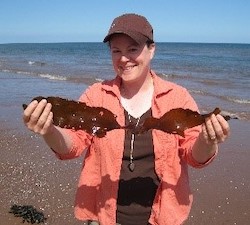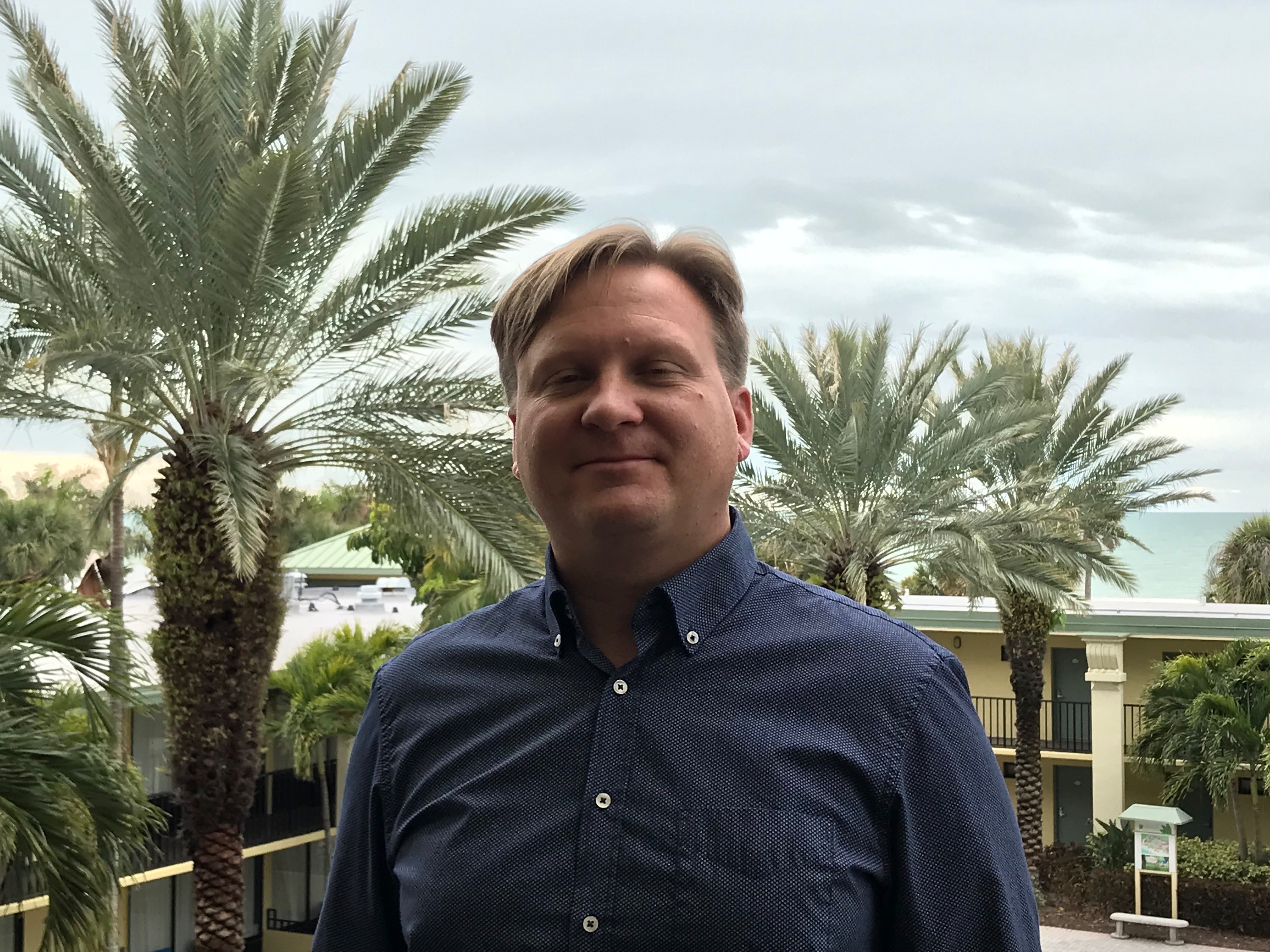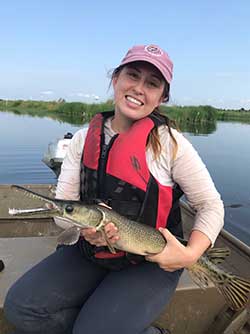Strategies for Preventing and Managing Harmful Cyanobacteria Blooms (Two Part Series)
Sponsored by: Interstate Technology and Regulatory Council
Archived: Thursday, October 13, 2022
Tuesday, November 8, 2022
ITRC Strategies for Preventing and Managing Harmful Cyanobacteria Blooms (Two Part Series)
2022-11-08
Interstate Technology and Regulatory Council
The Harmful Cyanobacteria Blooms (HCBs) training reviews key information found in the two ITRC HCB Guidance Documents, the 2021 Strategies for Preventing and Managing Harmful Cyanobacterial Blooms (HCB-1) and the 2022 companion document focused on benthic HCBs (HCB-2). ITRC's HCB-2 focuses on the ecology, toxin production, management, and mitigation of benthic HCBs and is a companion document to the HCB-1 document released by ITRC in March 2021.
Cyanobacteria are microscopic, photosynthetic organisms that can be found naturally in all aquatic systems. Under certain conditions, cyanobacteria can multiply and become very abundant, discoloring the water throughout a water body, or accumulating at the surface. These occurrences are known as "harmful cyanobacterial blooms (HCBs)." HCBs can occur in many parts of a water body. Planktonic HCBs occur when cyanobacteria dominate the open water of water bodies. ITRC's HCB-1 guidance includes information about planktonic HCBs.
In addition to being suspended in the open water, some cyanobacterial species grow attached to surfaces in a water body. These attached cyanobacteria can grow at the bottom of a water body (benthic zone) but may also be found nearer to the surface growing on submerged vegetation or woody debris. In any of these habitats the benthic cyanobacterial mats can produce and release cyanotoxins into the environment. When cyanobacteria proliferate as attached mats in benthic habitats instead of planktonic blooms, they present unique challenges to evaluating and communicating the public health and environmental risks caused by this less familiar appearance of cyanobacteria.
HCB-1 Training
The Harmful Cyanobacteria Bloom (HCB-1) training provides an overview of cyanobacteria (particularly planktonic blooms) and their management, covering five sections from the ITRC HCB-1 guidance document:
- Introduction to the Cyanobacteria (Section 3)
- Monitoring (Section 4)
- Communication and Response Planning (Section 5)
- Management and Control (Section 6)
- Nutrient Management (Section 7)
HCB-2 Training
The Benthic Harmful Cyanobacteria Bloom (HCB-2) training provides an overview of benthic cyanobacteria and their management, covering five sections from the ITRC HCB-2 guidance document:
- Introduction to the Benthic Cyanobacteria (Section 1)
- Cyanotoxins (Section 2)
- Monitoring for Benthic Cyanobacteria (Section 3)
- Introduction to Treatment Strategies (Section 4)
- Communication and Response Planning for Benthic Cyanobacteria (Section 5)
After both training's, you should understand:
- The basic ecology and physiology of planktonic and benthic cyanobacteria, and the harmful effects they have on health, the environment, and local economies
- An overview of cyanotoxin classes and available cyanotoxin thresholds for human health (recreational and drinking water) and domestic animals
- Common approaches to monitoring for cyanobacteria and cyanotoxins, and how to build a monitoring program
- The importance of good communication and coordinated response during HCBs, and the elements of a good response plan
- Available options for in-lake management and control of HCBs, including an introduction to possible treatment options for benthic cyanobacteria
- Nutrient management options to reduce the likelihood of HCBs in your water body
We encourage you to use the ITRC HCB Resources (HCB-1 and HCB-2) and the recorded trainings to learn about planktonic and benthic cyanobacteria, monitoring approaches, management of active blooms, and prevention of blooms in the future. For regulators and other government agency staff, these materials present the current state of the science on cyanobacteria and approaches to manage and reduce the occurrence of blooms. We share examples and resources from across the country that can help you develop approaches of your own. While the training makes every effort to keep the information accessible to a wide audience, it is assumed that the participants will have some basic technical understanding of biology, lake management, chemistry, and environmental sciences. As with other emerging concerns, our understanding of HCBs continues to advance. These trainings help you build HCB response plans now and point you to resources that will keep you up to date in the future.

Accessibility, Recording, and Content Disclaimer
Rehabilitation Act Notice for Reasonable Accommodation
It is EPA's policy to make reasonable accommodation to persons with disabilities wishing to participate in the agency's programs and activities, pursuant to the Rehabilitation Act of 1973, 29 U.S.C. 791. Any request for accommodation should be made to ITRC Training Program at 202-266-4932 or itrc@itrcweb.org, preferably one week or more in advance of the webinar, so that EPA will have sufficient time to process the request. EPA would welcome specific recommendations from requestors specifying the nature or type of accommodation needed. Please note that CLU-IN provides both alternate phone call-in options and closed captioning for all webinars, and requests for these specific accommodations are not necessary.
Webinar Recording
By participating in this CLU-IN webinar, you automatically agree to authorize recording of audio and visual content presented during this live event and consent to subsequent use of this recording in the public domain by the U.S. Environmental Protection Agency. This recording may include questions, comments and poll responses provided by you during the live event in addition to your name, voice, image or likeness. This recording will be made available after the conclusion of the live event as part of the CLU-IN webinar archives, and will remain available indefinitely. If you do not wish to consent to the recording, please do not join the live event, and contact Jean Balent at 202-566-0832 or balent.jean@epa.gov to discuss your concerns.
Content Disclaimer
This webinar is intended solely to provide information to the public. The views and opinions expressed as part of this webinar do not necessarily state or reflect those of the U.S. Environmental Protection Agency. It is not intended, nor can it be relied upon, to create any rights enforceable by any party in litigation with the United States, or to endorse the use of products or services provided by specific vendors. With respect to this webinar, neither the United States Government nor any of their employees, makes any warranty, express or implied, including the warranties of merchantability and fitness for a particular purpose, or assumes any legal liability or responsibility for the accuracy, completeness, or usefulness of any information, apparatus, product, or process disclosed, or represents that its use would not infringe privately owned rights.
Presenters:
 Gina LaLiberte, Wisconsin Department of Natural Resources (gina.laliberte@wisconsin.gov)
Gina LaLiberte, Wisconsin Department of Natural Resources (gina.laliberte@wisconsin.gov)
Gina LaLiberte leads response and communication on cyanobacterial issues as the Harmful Algal Bloom Coordinator for the Wisconsin Department of Natural Resources. She has a BS in Biology and a MS in Resource Ecology Management from the University of Michigan. She has studied algae for over 25 years.
 Christine Osborne, Utah Department of Environmental Quality (cosborne@utah.gov)
Christine Osborne, Utah Department of Environmental Quality (cosborne@utah.gov)
Christine Osborne is an environmental planner and NEPA coordinator with the Utah Department of Environmental Quality's Division of Water Quality (UT DWQ) in the Watershed Protection Section. She is the Communication Lead for the San Juan Watershed Program, coordinates NEPA comments from UT DWQ on federal projects, and is a member of the Integrated Report team. Christine co-presented Utah DEQ's HABs communication strategy in a 2018 webinar for the Environmental Council of States (ECOS) and has presented on risk communication for the past two years at the New Mexico Water Resources Research Institute Conference and Salt Lake County Watershed Symposium. She served as a co-chair of the ITRC HCB Risk Communication subgroup.
 Elizabeth Fabri Smith, Kansas Department of Health and Environment (elizabeth.smith@ks.gov)
Elizabeth Fabri Smith, Kansas Department of Health and Environment (elizabeth.smith@ks.gov)
Elizabeth Smith has been at the Kansas Department of Health and Environment since 2005. She oversees several programs in Bureau of Water, including Harmful Algal Bloom Response, Stream Probabilistic Monitoring, and Use Attainability Assessment. Smith currently serves as the EPA Region 7 state representative to the National Water Quality Monitoring Council. She holds a BS in Biology and a PhD in Entomology from University of Kansas
 Ben Holcomb, Utah Department of Environmental Quality (bholcomb@utah.gov)
Ben Holcomb, Utah Department of Environmental Quality (bholcomb@utah.gov)
Ben Holcomb works for the Utah Division of Water Quality (UT DWQ) where he manages the Water Quality Standards and Technical Services Section. He has worked at UT DWQ for 12 years and his past work includes salmon restoration, water quality management, and tribal sovereignty in the Pacific NW. He received a B.S. in Environmental Science from Allegheny College, Pennsylvania and a M.S. in Aquatic Ecology from South Dakota State University.
 Ruth Briland, Ohio Environmental Protection Agency (Ruth.Briland@epa.ohio.gov)
Ruth Briland, Ohio Environmental Protection Agency (Ruth.Briland@epa.ohio.gov)
Ruth Briland is the technical lead for the Harmful Algal Blooms program within the Emerging Contaminants section of the Division of Drinking and Ground Waters at Ohio Environmental Protection Agency in Columbus, Ohio. She joined the agency in 2016 and provides technical expertise and assistance in responding to inquiries on harmful algal blooms and integration with other agency programs. She has a doctoral and master's degrees from The Ohio State University studying aquatic ecology, specifically how plankton and fish communities in Lake Erie respond to eutrophication and harmful algal blooms.
 Anthea Fredrickson, Lower Colorado River Authority (Anthea.Fredrickson@lcra.org)
Anthea Fredrickson, Lower Colorado River Authority (Anthea.Fredrickson@lcra.org)
Anthea Fredrickson is an aquatic biologist working for the Lower Colorado River Authority (LCRA) in Austin, Texas. Anthea joined LCRA in January 2021, and by February, found that lakes located inside the Colorado River were experiencing issue with harmful cyanobacteria. Anthea developed a cyanotoxin monitoring and response plan for LCRA, and has helped other authorities around Texas understand and monitor cyanobacteria. Anthea has spent most of her career working on freshwater fish ecology, but during her undergraduate career worked in the Kudela Lab studying harmful marine algal blooms. She received her M.S. in Marine and Environmental Science from Nicholls State University and her B.S. in Marine Biology from the University of Santa Cruz California.
 Hannah Bonner, Utah Department of Environmental Quality (hbonner@utah.gov)
Hannah Bonner, Utah Department of Environmental Quality (hbonner@utah.gov)
Hannah Bonner is an Environmental Scientist for the Utah Division of Water Quality. In this capacity, Hannah manages Utah's recreational water quality programs. Her work emphasizes monitoring, analyzing, communicating, and responding to waterborne pathogens and harmful algal blooms in waterbodies across the state. Hannah's background includes work in surface hydrology, visualizing past climates, and science communication. She holds a BS in Geology from Brigham Young University and a PhD in Geology (Surface Water Emphasis) from University of Colorado Boulder.
Moderator:
ITRC Training Program (itrc@itrcweb.org)
Webinar Slides and References:
Webinar Slides and References:
Additional Resources:
- ITRC (Interstate Technology and Regulatory Council) Products and Information
- Strategies for Managing and Preventing Harmful Cyanobacteria Blooms (HCBs) Guidance Document
- The HCB Monitoring Tool
- The HCB Management Criteria Tool
- The HBC Communication and Response Planning Tool
- The HCB Nutrient Management Tool
- ITRC's Risk Communication Toolkit
- EPA Office of Research and Development Journal Article: An Overview of Geophysical Technologies Appropriate for Characterization and Monitoring at Fractured-Rock Sites
If you have a suggested topic or idea for a future CLU-IN internet seminar, please contact:
Technology Integration and Information Branch
PH: 202-566-0832 | Email: balent.jean@epa.gov
Technology Integration and Information Branch
PH: 202-566-0875 | Email: adam.michael@epa.gov





